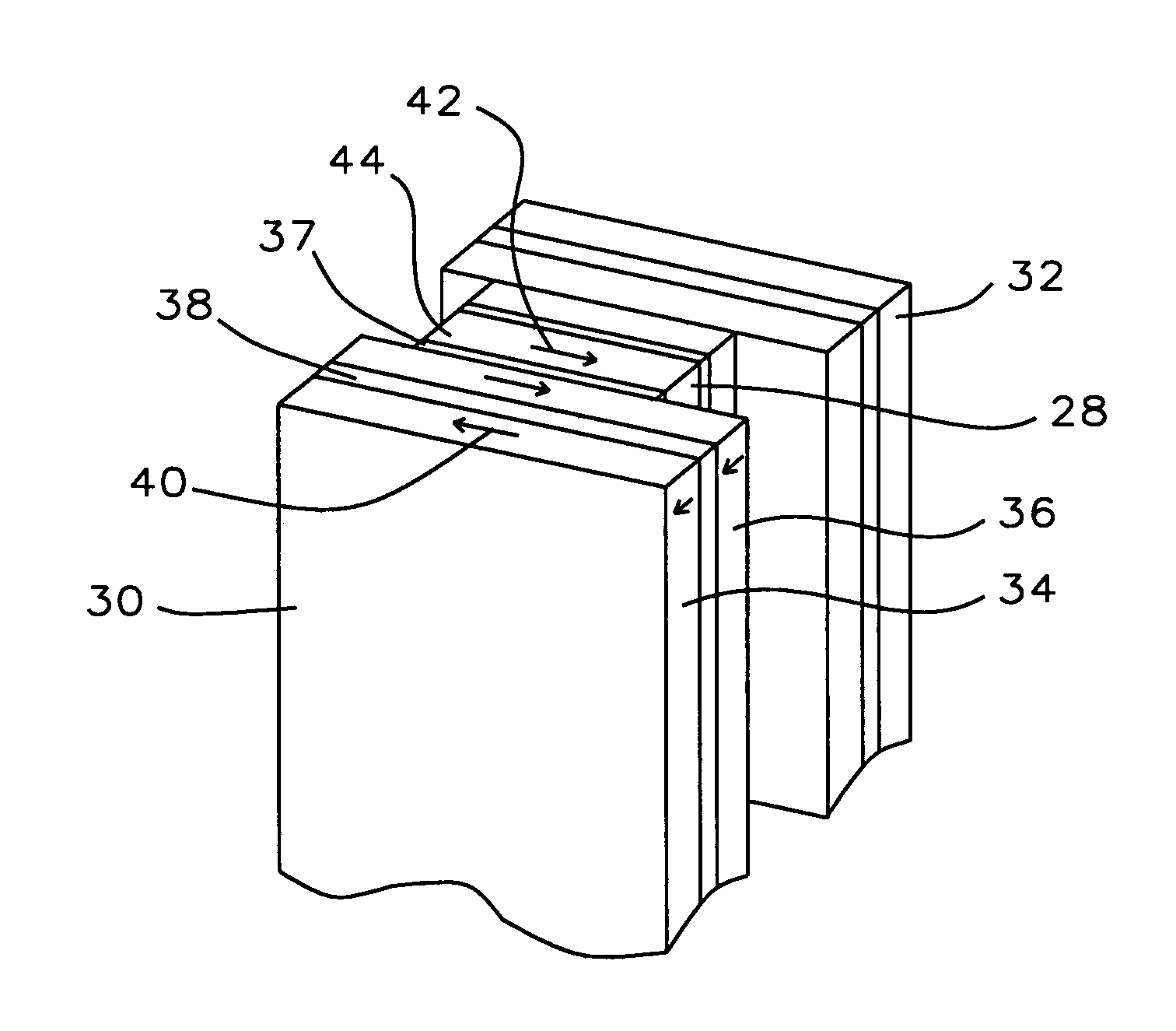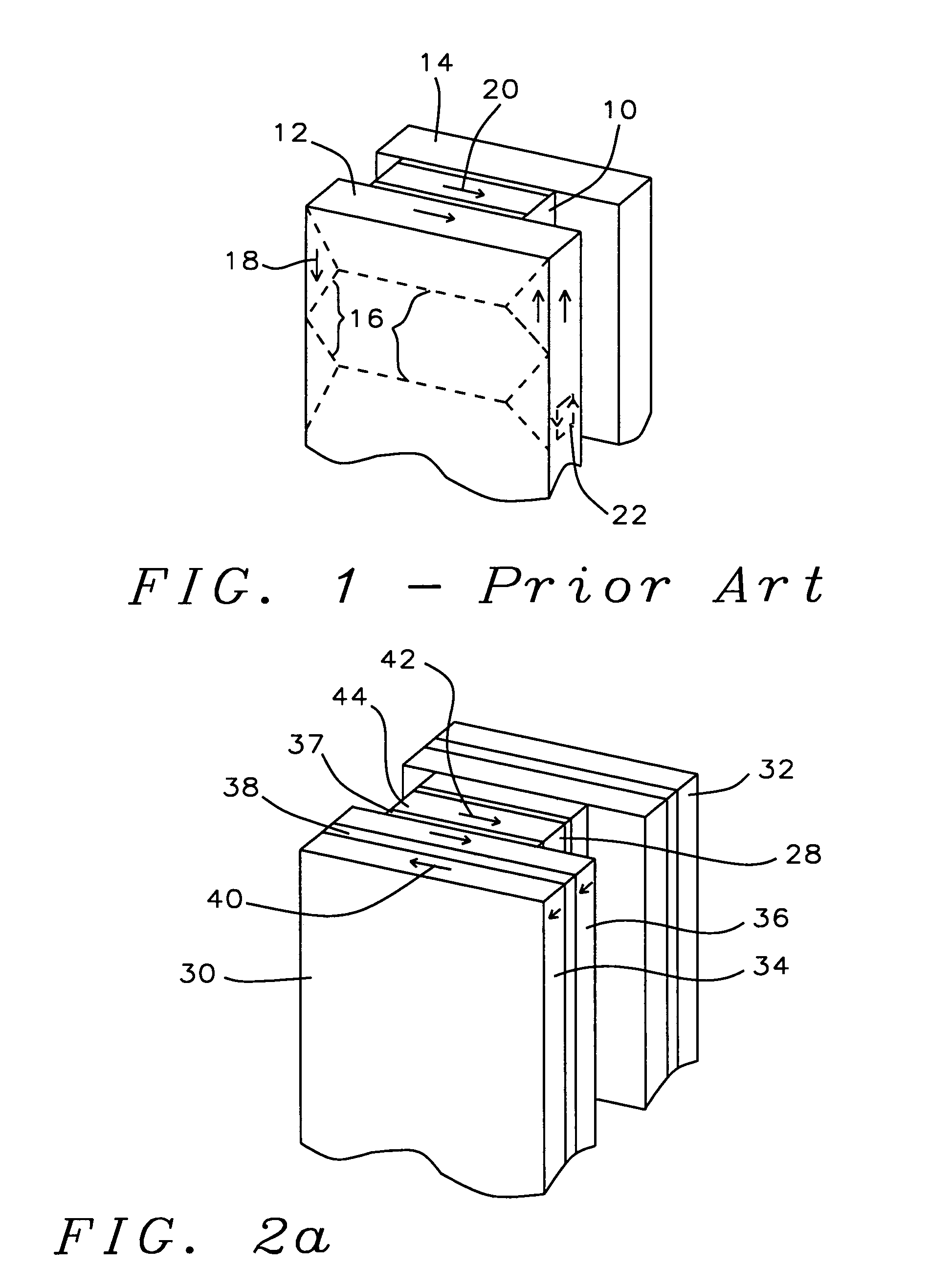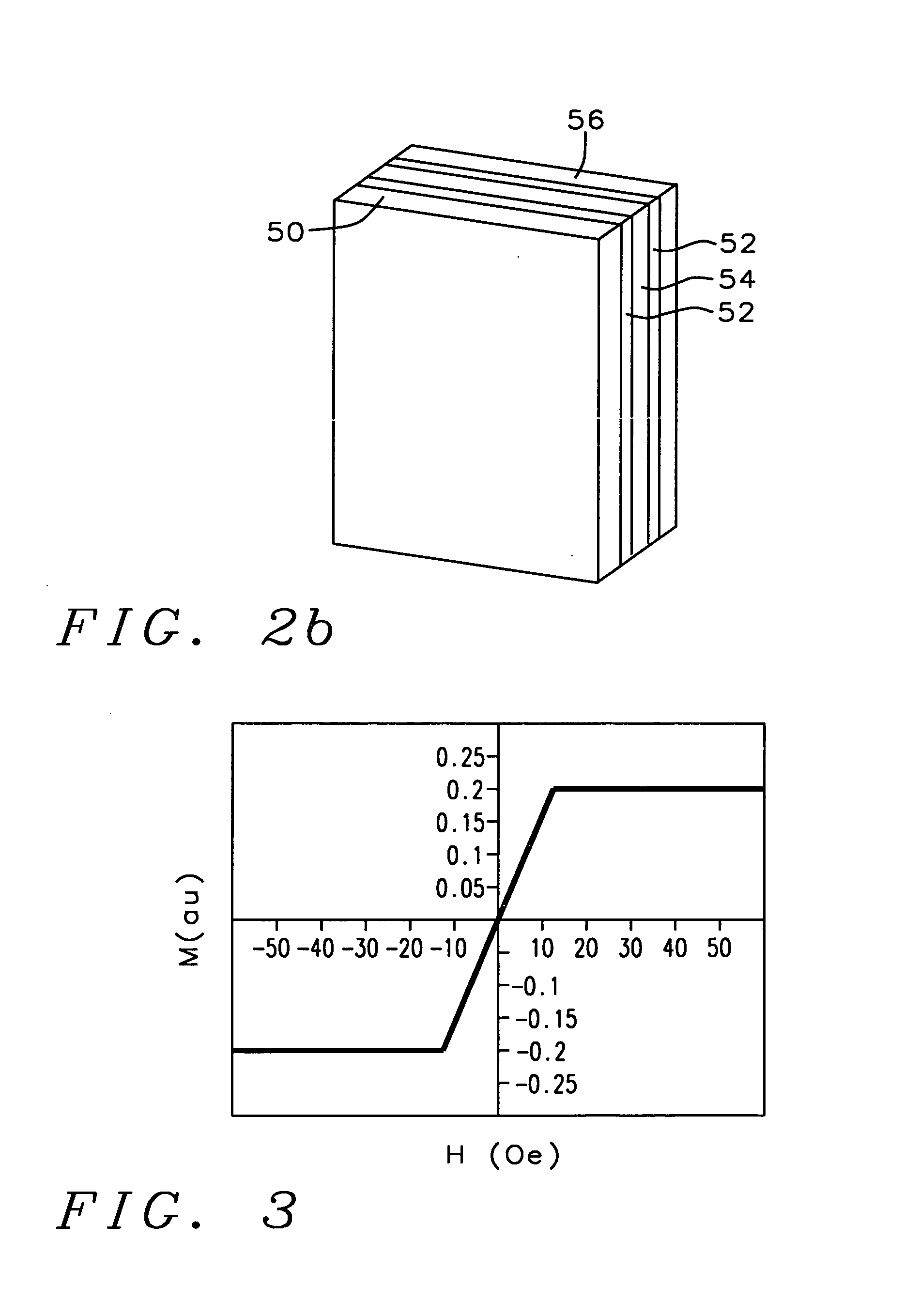Shield structure design to improve the stability of an MR head
- Summary
- Abstract
- Description
- Claims
- Application Information
AI Technical Summary
Benefits of technology
Problems solved by technology
Method used
Image
Examples
Embodiment Construction
[0019]The present invention provides a laminated magnetic shield structure whose design improves the stability and performance of an MR read head. Referring first to FIG. 1, there is shown a schematic drawing of a MR sensor element (10) and its surrounding magnetic shields (12) and (14) fabricated in accordance with the present art. The shields are typically formed of a single ferromagnetic layer and display a domain structure (16) that is substantially isotropic and subject to noise producing variations during the operation of the shield. The magnetizations of the various domains (18) are not aligned in the direction of the magnetic layer of the sensor element (20) and, therefore, do not assist in maintaining a consistent orientation of the sensor magnetization. The movement of the shield magnetic moments tend to cause eddy currents to form in the edges of the shield (22).
[0020]Referring now to FIG. 2a, there is shown a schematic drawing of an MR sensor element (28) and its surroun...
PUM
 Login to View More
Login to View More Abstract
Description
Claims
Application Information
 Login to View More
Login to View More - R&D
- Intellectual Property
- Life Sciences
- Materials
- Tech Scout
- Unparalleled Data Quality
- Higher Quality Content
- 60% Fewer Hallucinations
Browse by: Latest US Patents, China's latest patents, Technical Efficacy Thesaurus, Application Domain, Technology Topic, Popular Technical Reports.
© 2025 PatSnap. All rights reserved.Legal|Privacy policy|Modern Slavery Act Transparency Statement|Sitemap|About US| Contact US: help@patsnap.com



